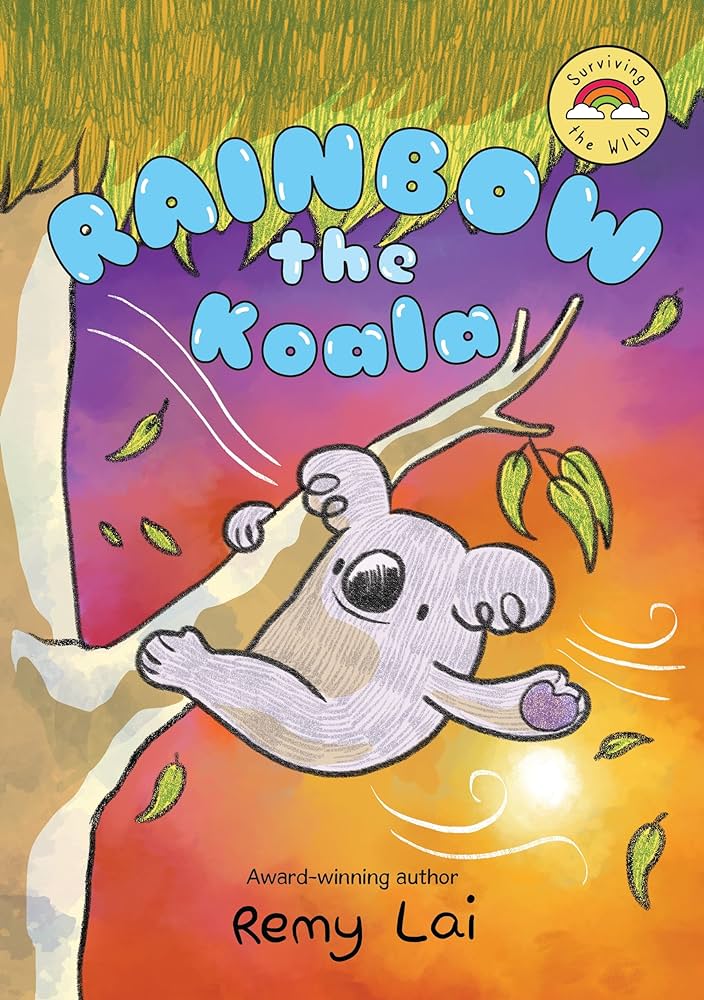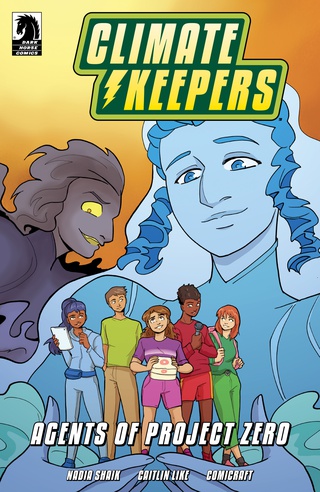“And unfortunately, causing extinctions isn’t new for us humans. There are a lot of animals that are extinct because of things we did, and not just because we tore down trees or polluted” — Miss Lernin, Mammal Takeover, p. 110.
| Creator(s) | Abby Howard (author) |
| Publisher | Amulet Books |
| Publication Date | 2019 |
| Genre | Educational, Nonfiction |
| Environmental Themes and Issues | Climate Change, Conservation, Deforestation, Educational Nature Facts, Endangered Species, Environmental Activism, Extinction, Habitat Destruction, Factory Farming, Fuel Extraction or Shortages, Melting Ice Caps, Ocean Acidity, Pollution, Recycling, Sustainable Living |
| Protagonist’s Identity | Ronnie: 10-year-old Black girl |
| Protagonist’s Level of Environmental Agency | Level 4: Considerable Environmental Agency without Activism |
| Target Audience | Middle Grade (8-12 years) |
| Settings | Provides a global view of habitats across Earth |
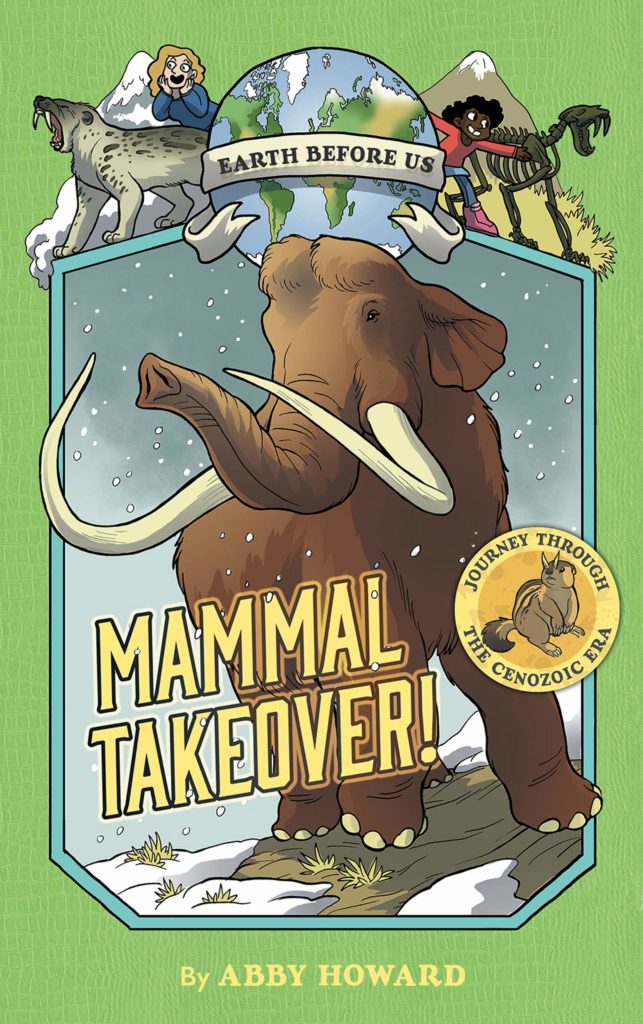
Environmental Themes
Mammal Takeover is the third and final volume in creator Abby Howard’s middle grade nonfiction series Earth Before Us. The comic begins as protagonist Ronnie, a ten-year-old Black girl, shivers in the cold while her classmates play on a snowy playground. She asks herself, “Ugh, how did my ancestors ever survive in the ice age? How are humans still so bad at dealing with cold weather?” In response, Miss Lernin, her science teacher, pops out of a nearby tunnel in the snow and offers to take the girl on an educational journey back through each of the seven epochs of the Cenozoic era (66 million years ago through the present day), so that Ronnie can understand how humans and other mammals evolved. Climbing into the snow tunnel with Miss Lernin, Ronnie gets transported back through time, starting with the Paleogene epoch. As the two humans travel through the seven epochs, they encounter various species of mammals across the continents, and Miss Lernin provides an educational overview of the animals, their evolution, and their physical and behavioral traits. In the Pleistocene epoch, Miss Lernin introduces Ronnie to Homo sapiens and Neanderthals. She narrates the evolution of humans, highlighting “sister species” like the Denisovans that went extinct, and addresses the reason for contemporary humans’ differing skin tones, without perpetuating harmful racist myths.
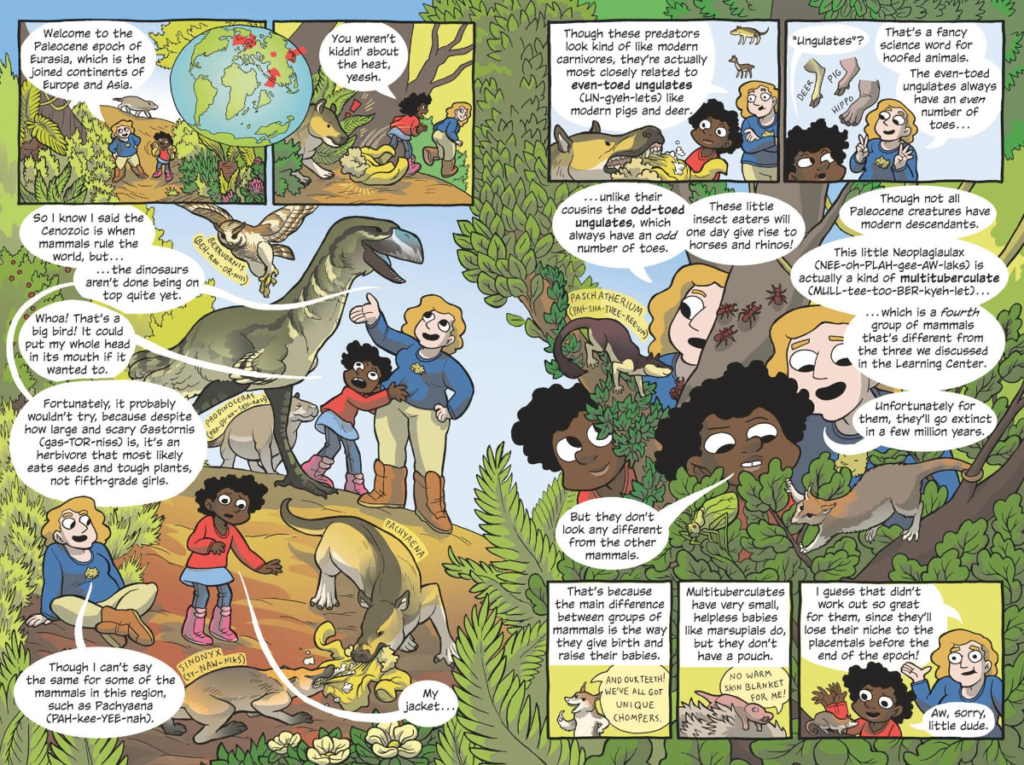
Throughout the narrative, Ronnie actively contributes to the discussion by asking informed questions. For instance, Ronnie studies a hoofed mammal and asks, “This isn’t related to elephants, right? I’ve been fooled by these South American animals before, but the tusks and trunk are so similar to afrotheres…” Miss Lernin responds, “Indeed, Astraponotus is not an afrothere, but a kind of South American ungulate” (Howard 41). These interactions between Ronnie and Miss Lernin demonstrate how children can engage in critical inquiry instead of merely passively absorbing information from a teacher. Additionally, Howard frequently includes humorous dialogue, blending entertainment and education.
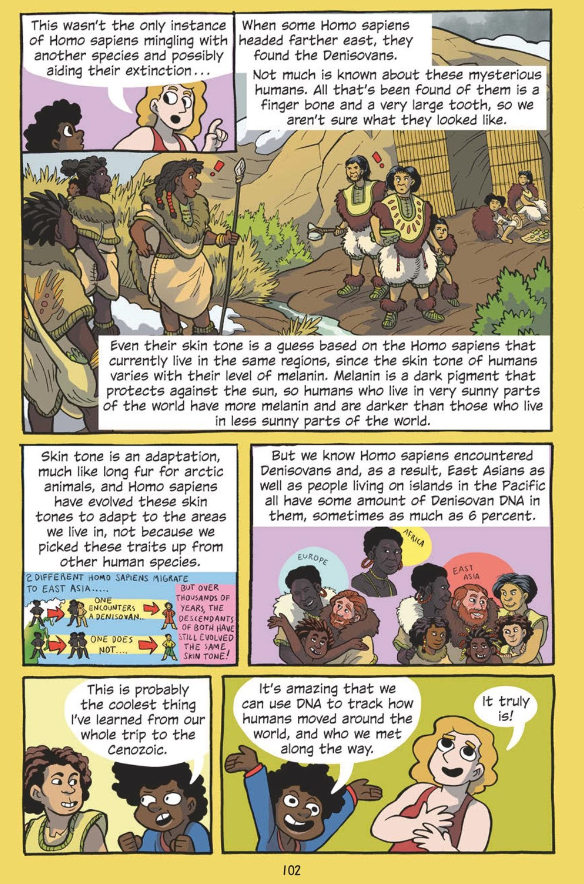
At the conclusion of the narrative, Miss Lernin warns Ronnie that the planet is now experiencing the beginning of another mass extinction event caused by climate change. Human actions like deforestation, factory farming, and fossil fuel consumption, she explains, have contributed to dangerous environmental issues, including extreme weather events, hotter temperatures, melting ice caps, pollution, and increased ocean acidity. As a result, Miss Larnin notes that many species may soon go extinct. She outlines some of the ways that humans have already caused the extinction of species, including passenger pigeons and Stellar’s sea cow. However, she also offers young readers a glimpse of optimism, saying, “But on the bright side, there are many people who are working very hard to save ecosystems and animals that are on the brink of dying out. Habitat protection and breeding programs have been able to rescue some species, like the California condor and the golden lion tamarin monkey, among many others. Humans are becoming more aware of the impact we have on the world, and what we can do to help the animals around us” (Howard 113). Ronnie expresses that she feels powerless to contribute to these efforts, saying, “I’m just a kid. I’m not in charge of where my city gets its power or how many forests we tear down! It’s the grown-ups who are making these choices, and that makes me frustrated” (Howard 114). Miss Lernin suggests ways that children can participate in environmental activism, including asking adults to alter their behavior, limiting their meat and dairy consumption, planting a tree or garden, recycling, and persuading adults to vote for politicians who want to help the environment. She concludes, “Just because there are a lot of people out there doing bad things doesn’t mean that small good things don’t matter. Together, we could plant a whole forest.” By focusing on the cumulative effects of small actions, the comic empowers children to participate in environmental activism in the face of seemingly insurmountable environmental issues.
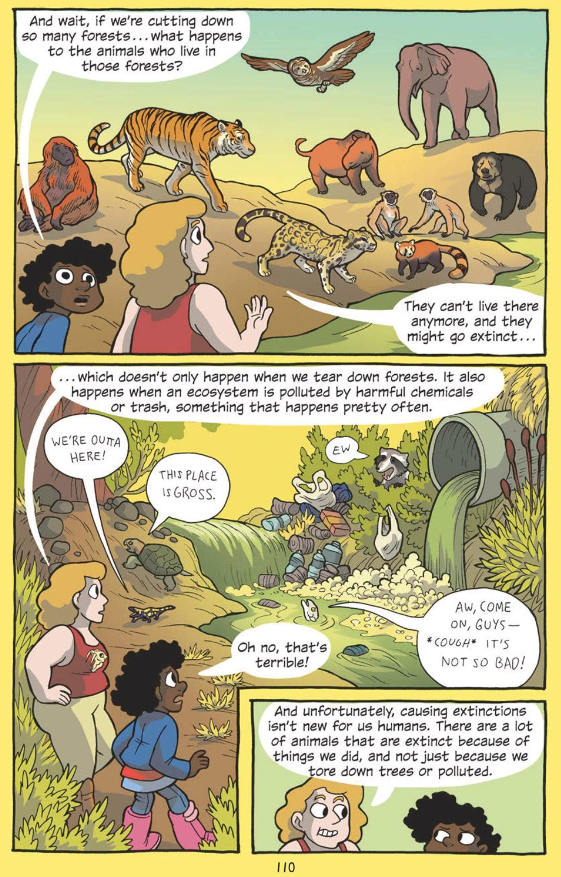
Paratexts
The comic includes two educational paratexts: diagrams of phylogenetic trees and a three-page glossary of environmental and scientific terms used in the primary narrative.
Additional Resources
Mozzocco, J. Caleb. “Abby Howard on ‘Mammal Takeover’ and her ‘Earth Before Us’ Trilogy.” Good Comics for Kids, 27 December 2019, https://blogs.slj.com/goodcomicsforkids/2019/12/27/abby-howard-on-mammal-takeover-and-her-earth-before-us-trilogy/.


